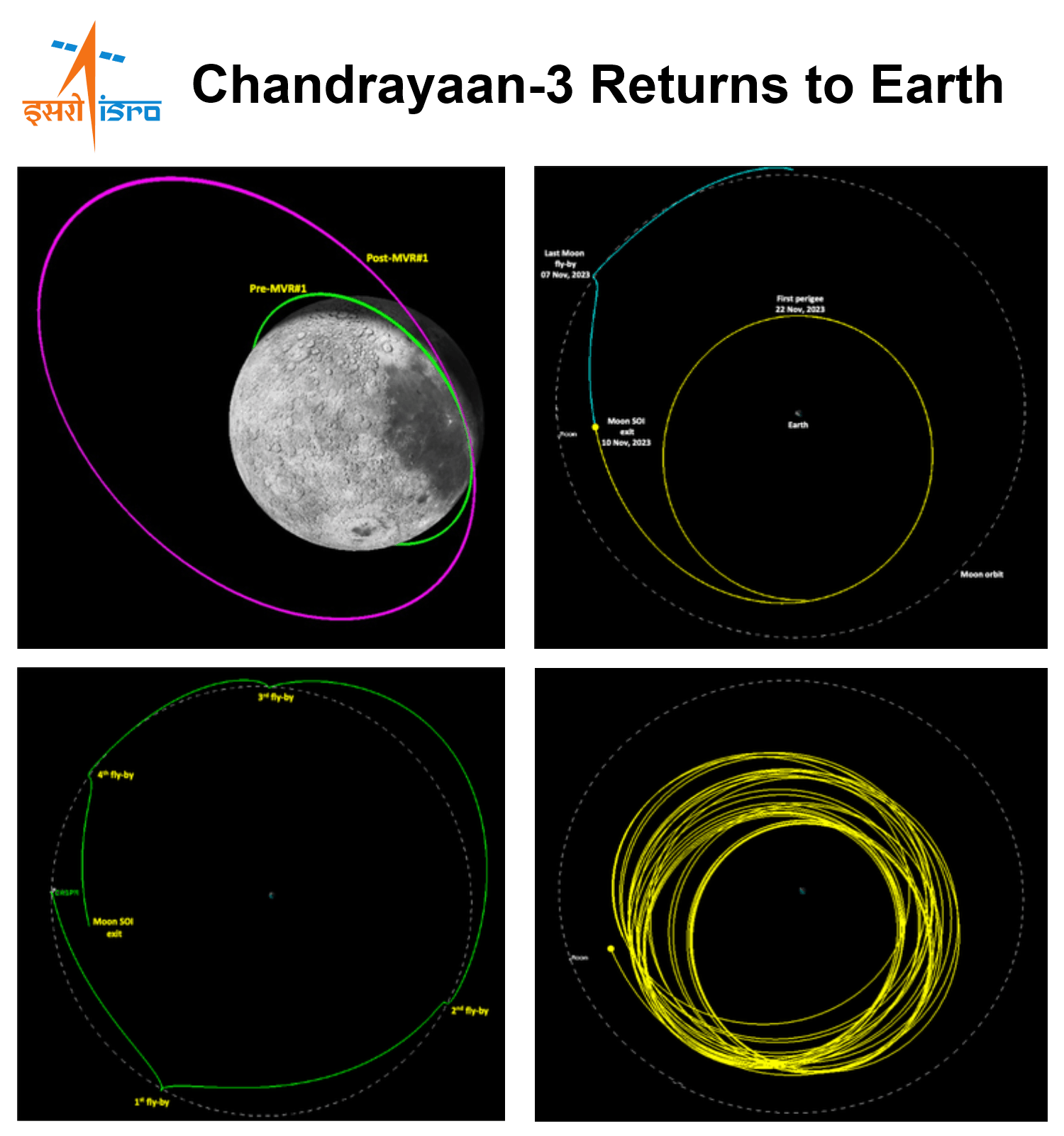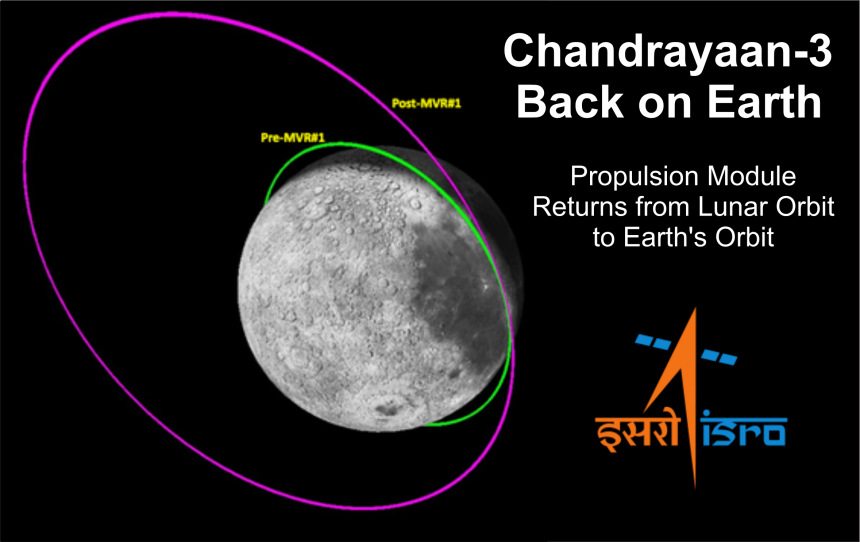Chandrayaan-3 Propulsion Module accomplished a pivotal journey, departing from its lunar orbit and repositioning into Earth’s orbit. Initially tasked with lunar objectives, the module’s successful return to Earth’s orbit marks a remarkable milestone in space exploration. Precision maneuvers and strategic fuel management enabled this transition, highlighting advanced navigational capabilities and setting new precedents for future missions. This significant event showcases the module’s versatility and the adeptness of the mission’s execution, shaping the landscape of interplanetary endeavors.

Chandrayaan-3 Propulsion Module Returns from Lunar Orbit to Earth’s Orbit
That’s an impressive account of the Chandrayaan-3 mission! The experiment involving the movement of the Propulsion Module (PM) from lunar orbit to Earth orbit showcases the strategic utilization of available resources for future missions. The successful completion of the mission objectives, including the soft landing near the lunar south polar region and the operation of scientific instruments, highlights the technological advancements and precision in mission planning.
The decision to redirect the PM to a suitable Earth orbit after meeting its primary objectives demonstrates foresight in maximizing the mission’s utility. Maneuvers, such as raising the apolune altitude and performing a Trans-Earth Injection (TEI) maneuver, indicate meticulous planning to ensure the safety of the PM and prevent collisions with other space objects.
The operational success of the SHAPE payload for Earth observation during special events like a Solar Eclipse is a testament to the mission’s versatility. Furthermore, the development of analytical tools and software modules for trajectory planning and gravity-assisted flybys showcases the team’s dedication to advancing space exploration techniques.
The careful execution of return maneuvers not only achieved the objectives of returning from the Moon to Earth but also prioritized the prevention of uncontrolled crashes, aligning with the mandate of avoiding debris creation on the lunar surface. This detailed report emphasizes the technological achievements and invaluable insights gained for future missions in space exploration.









